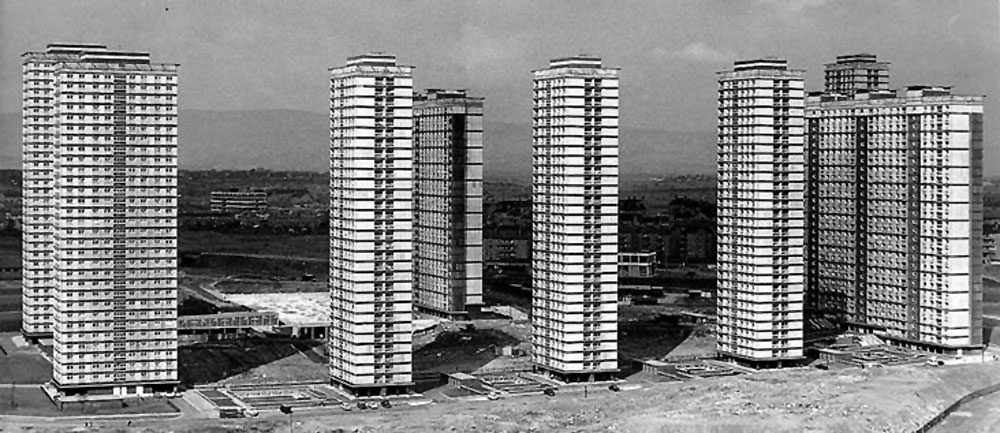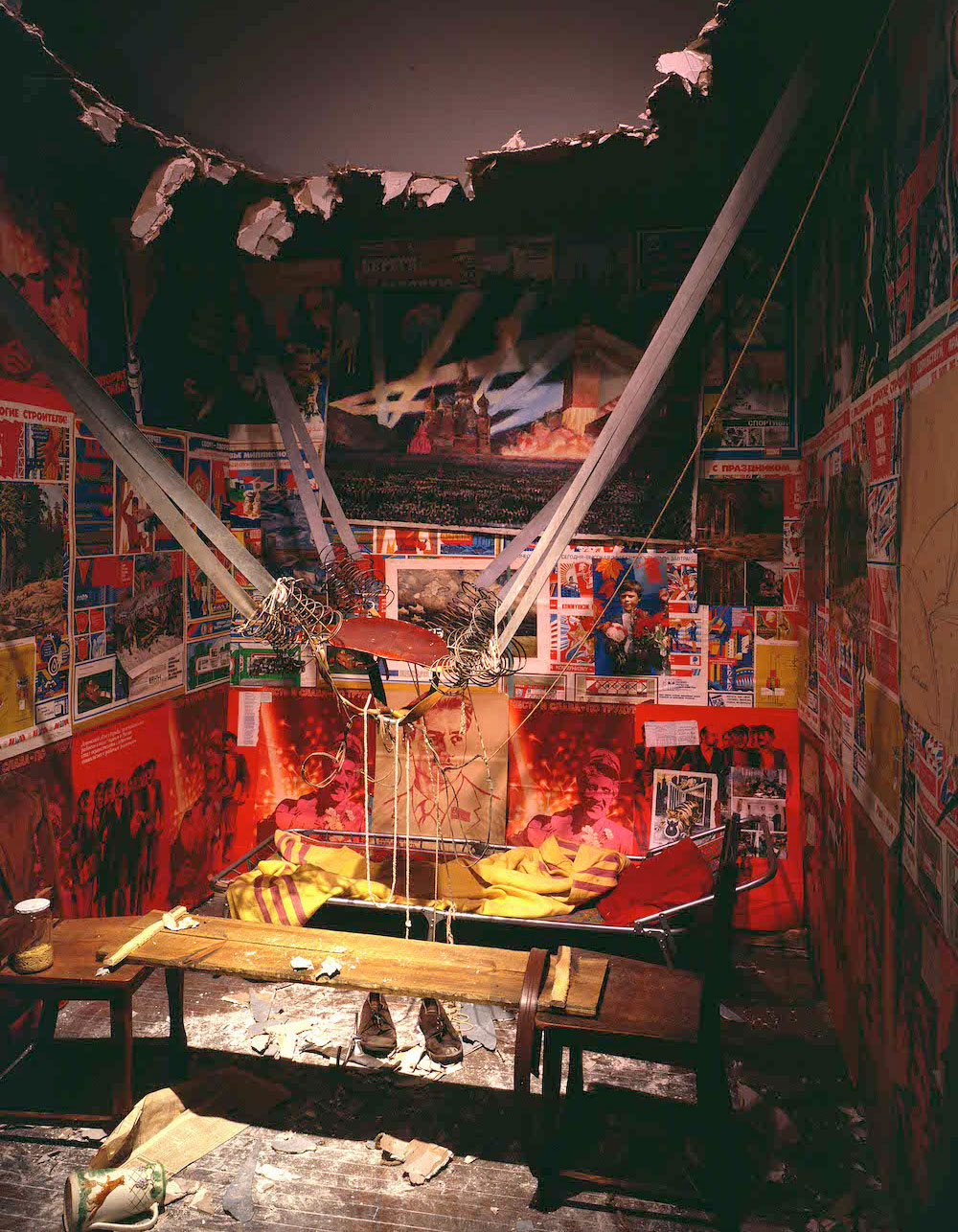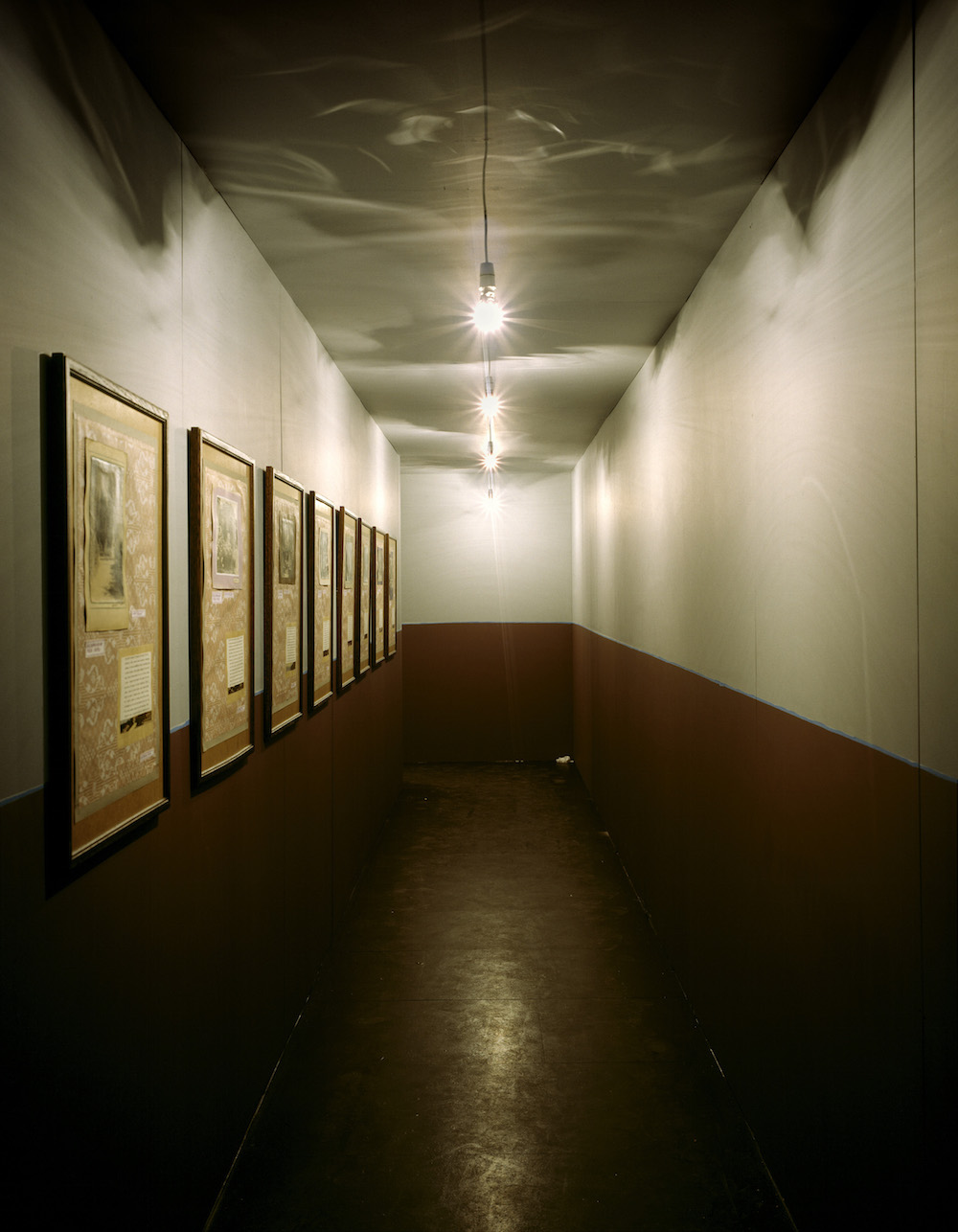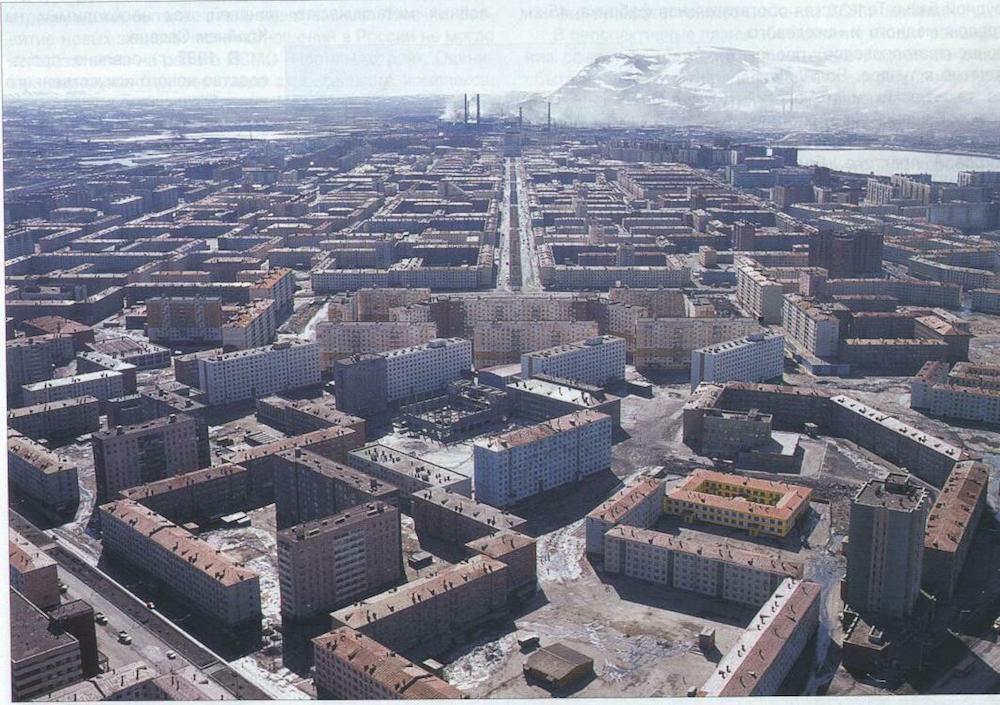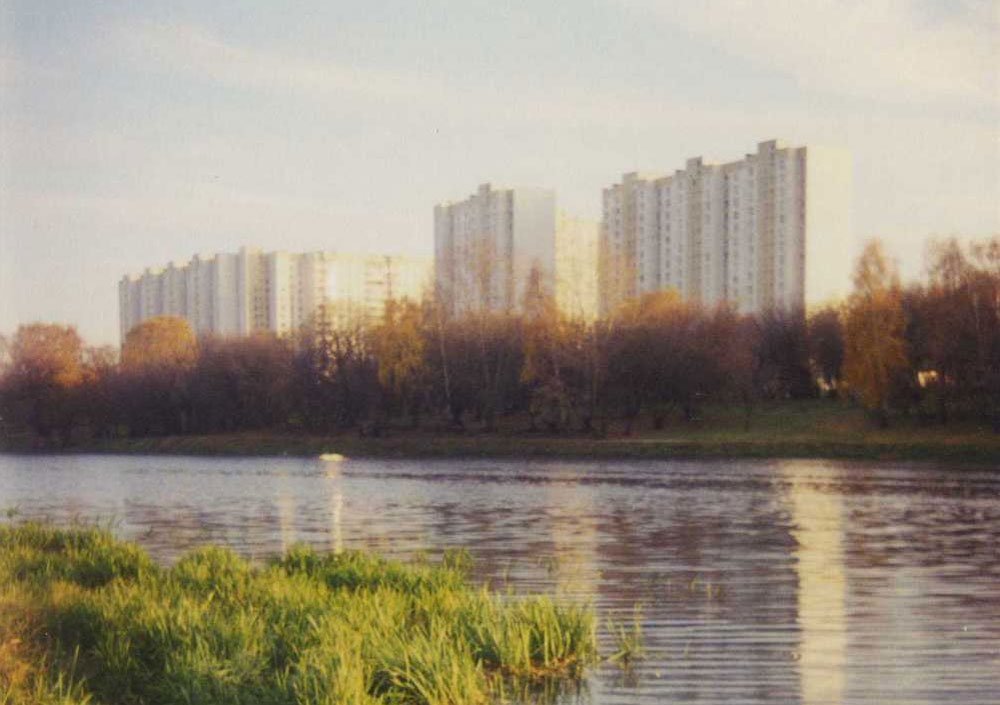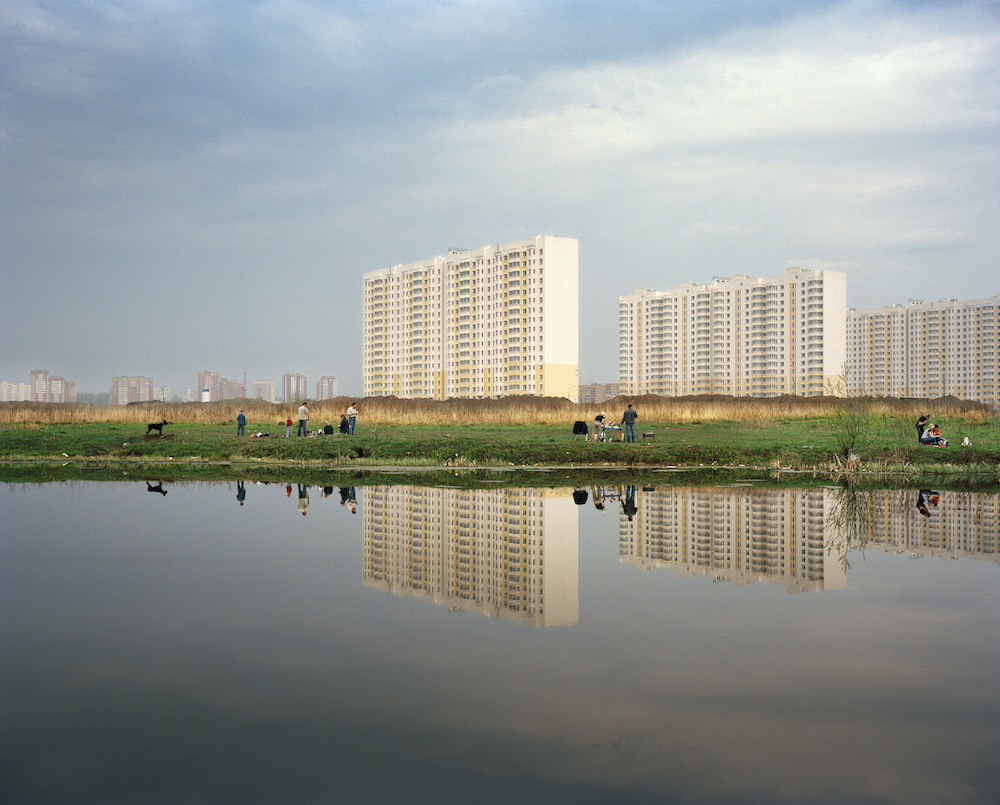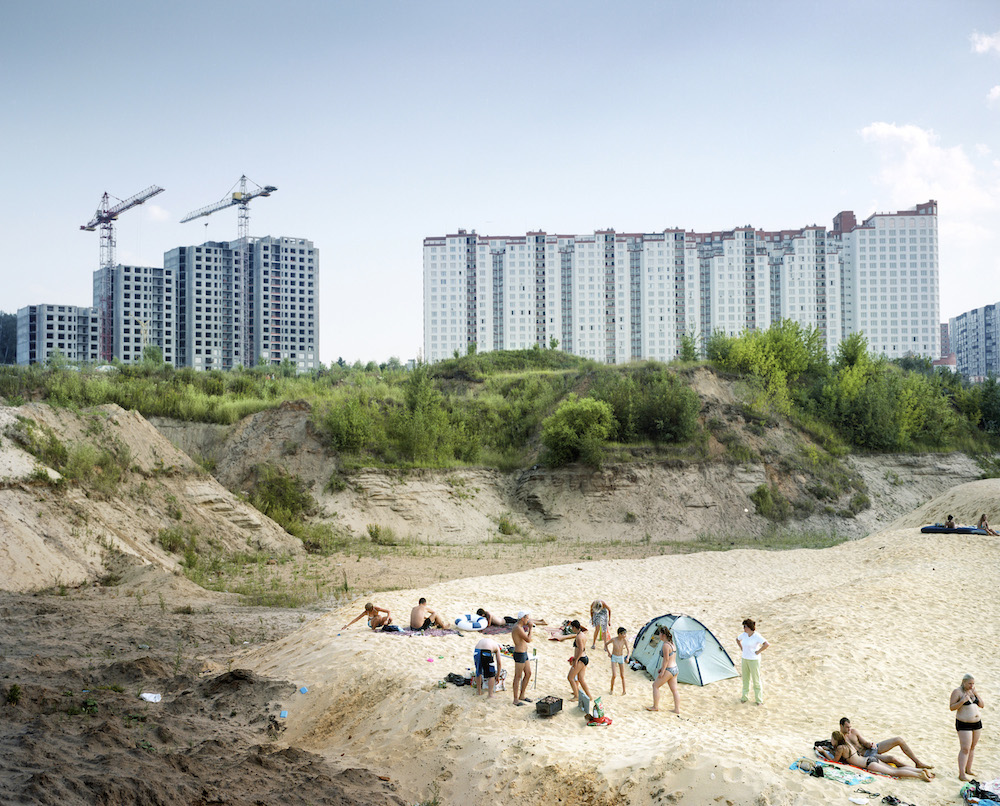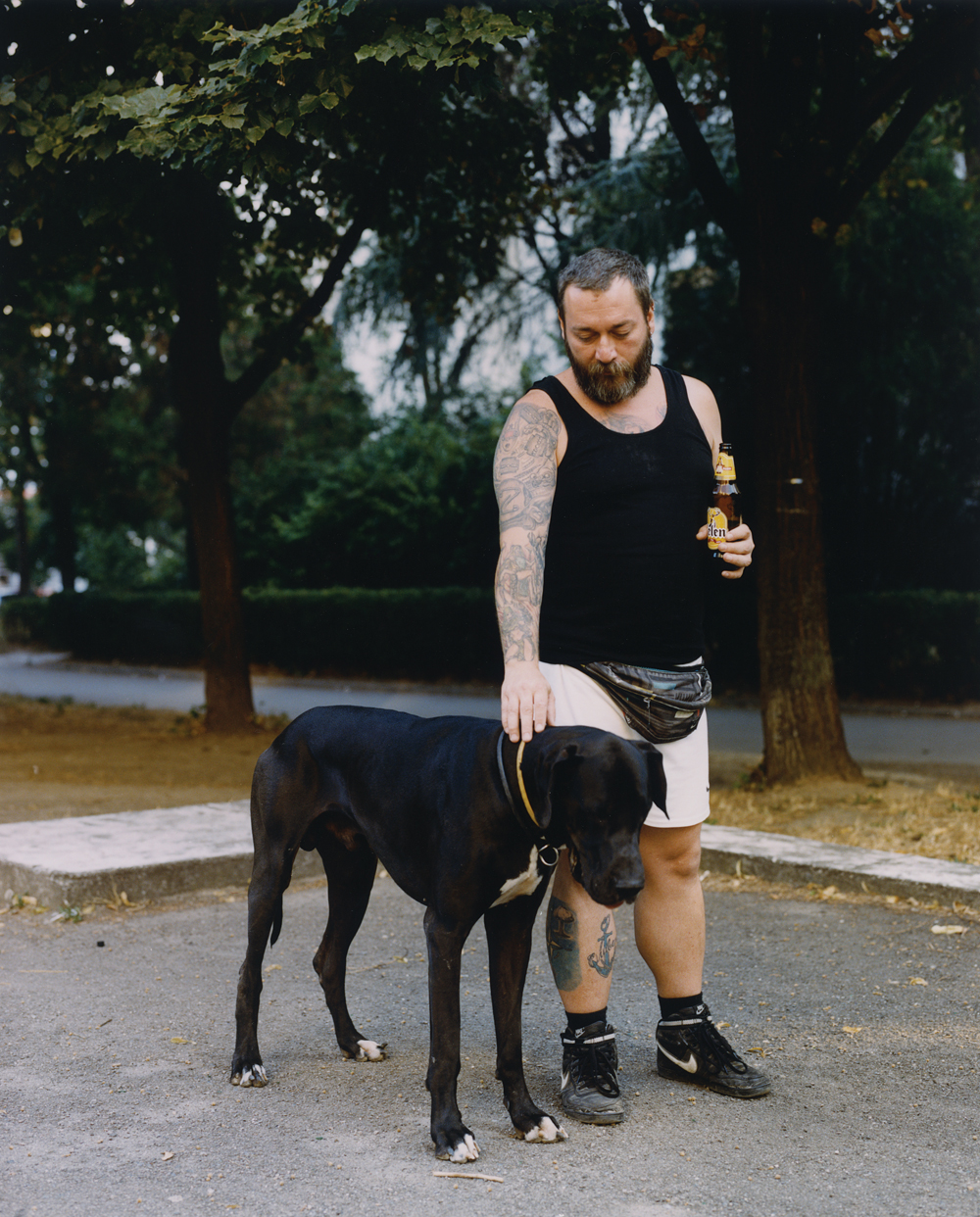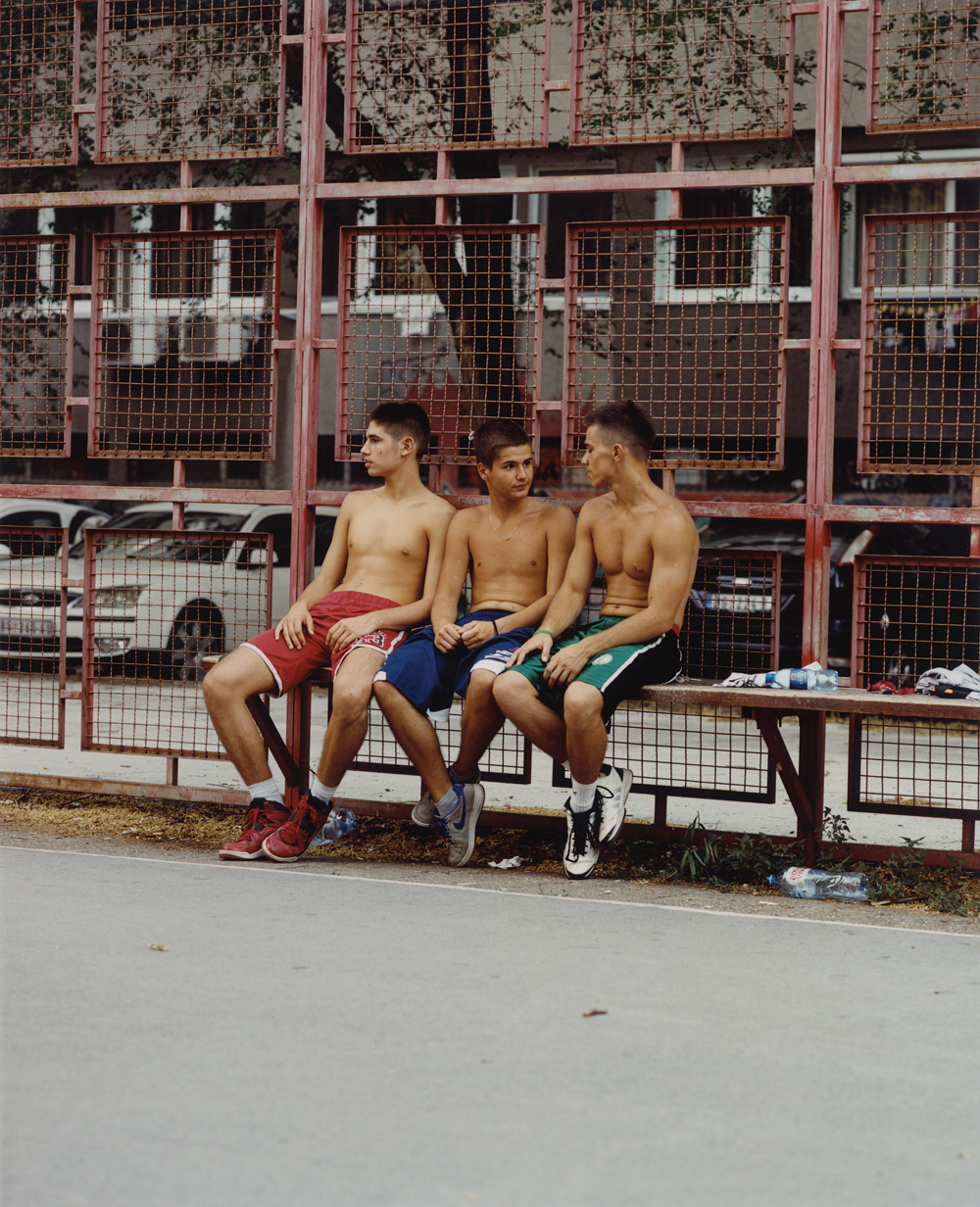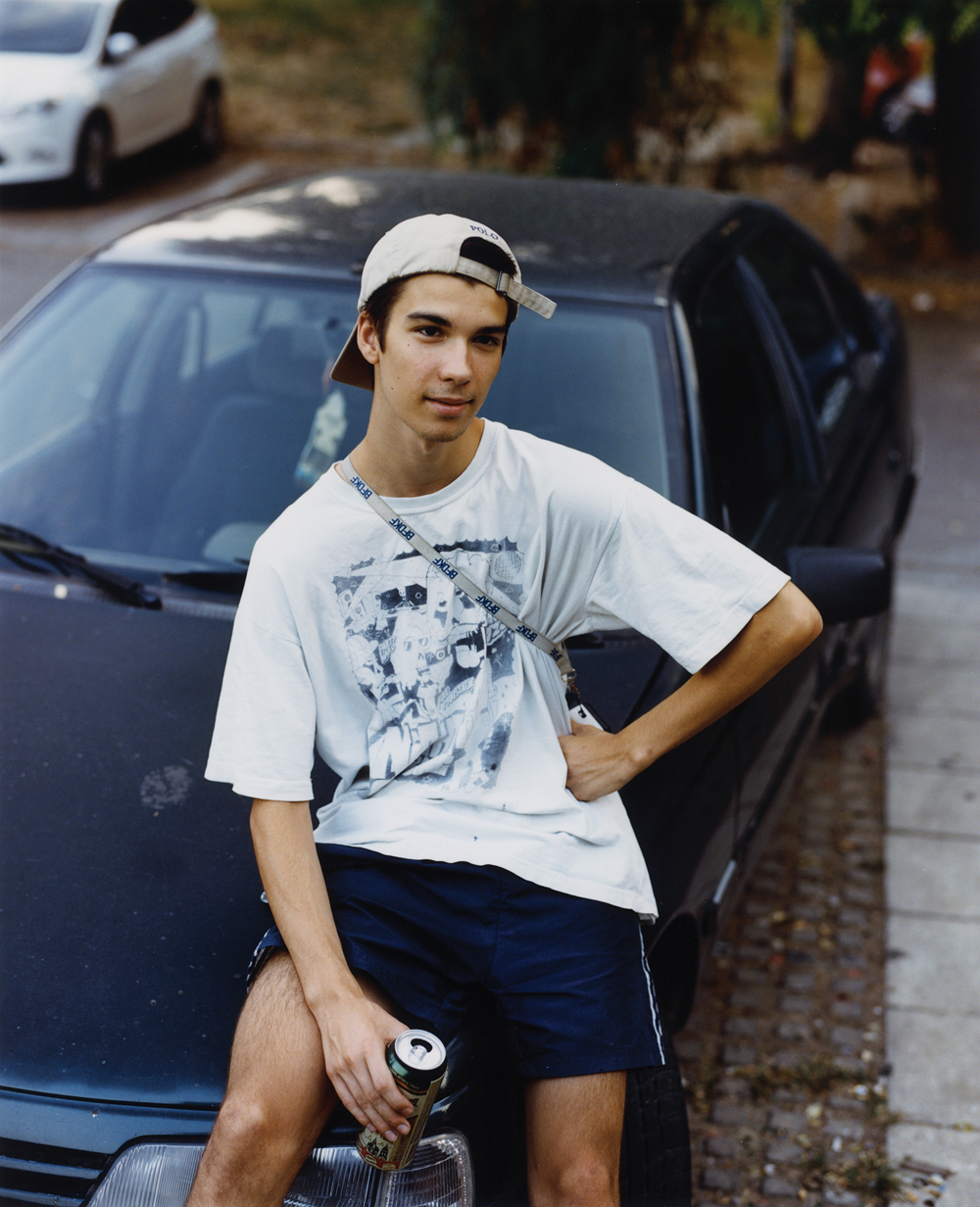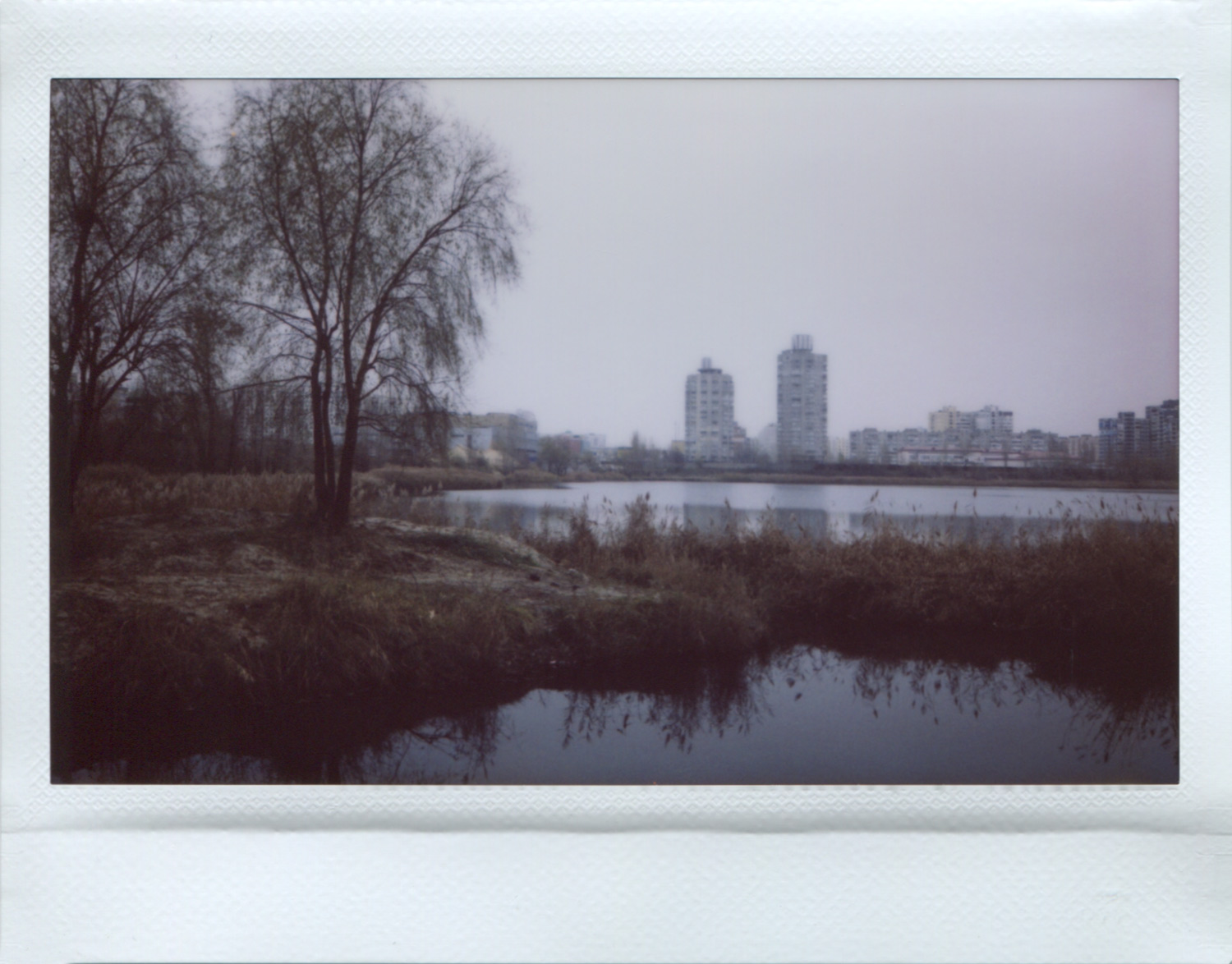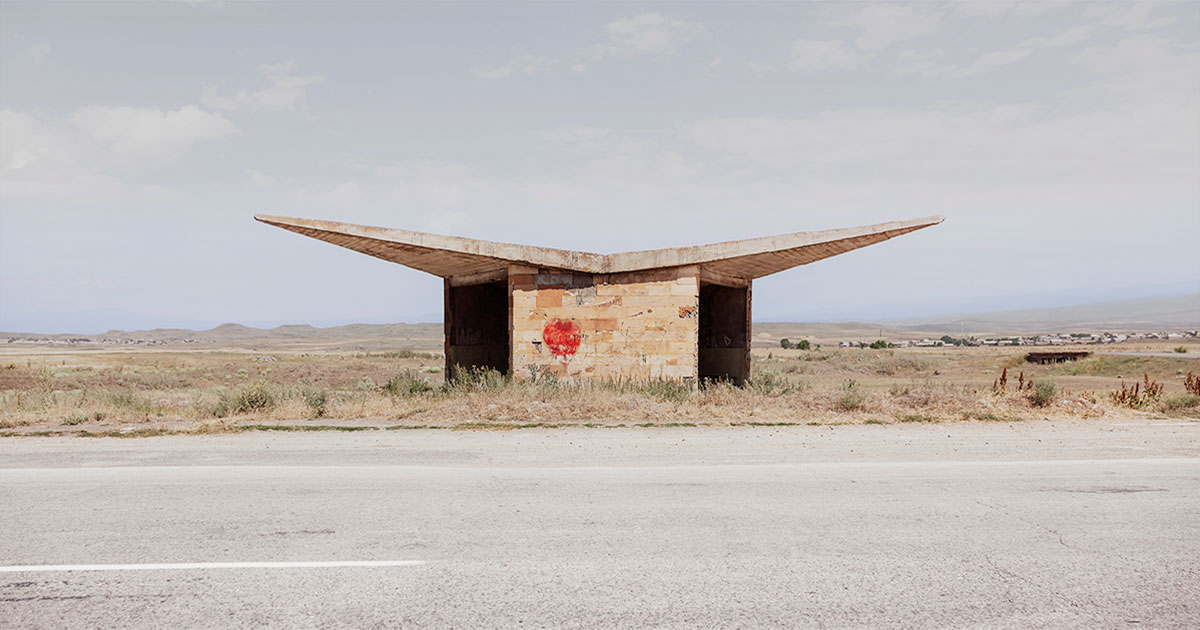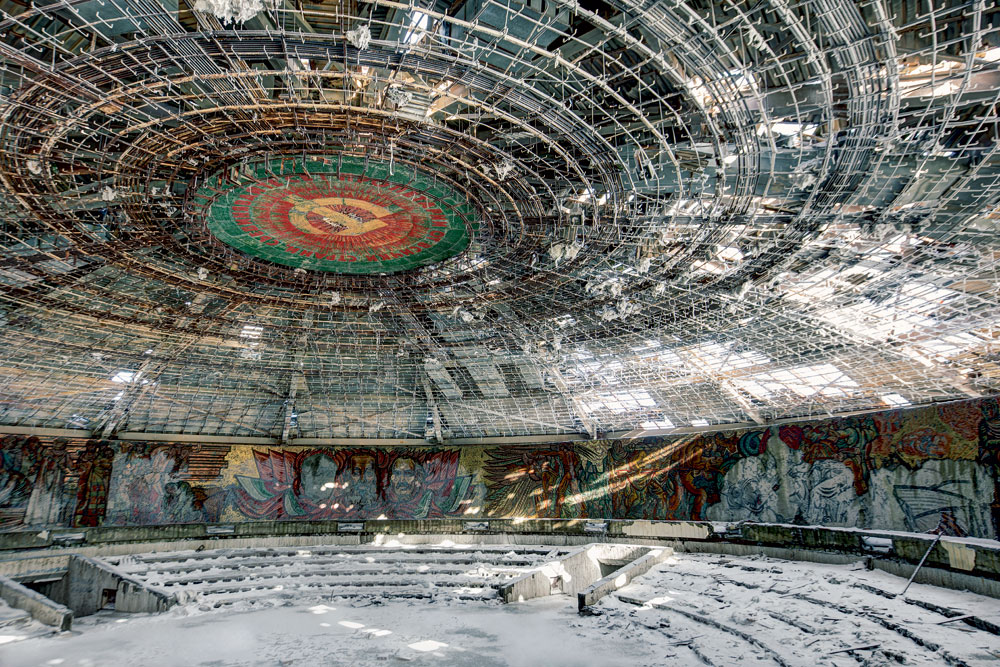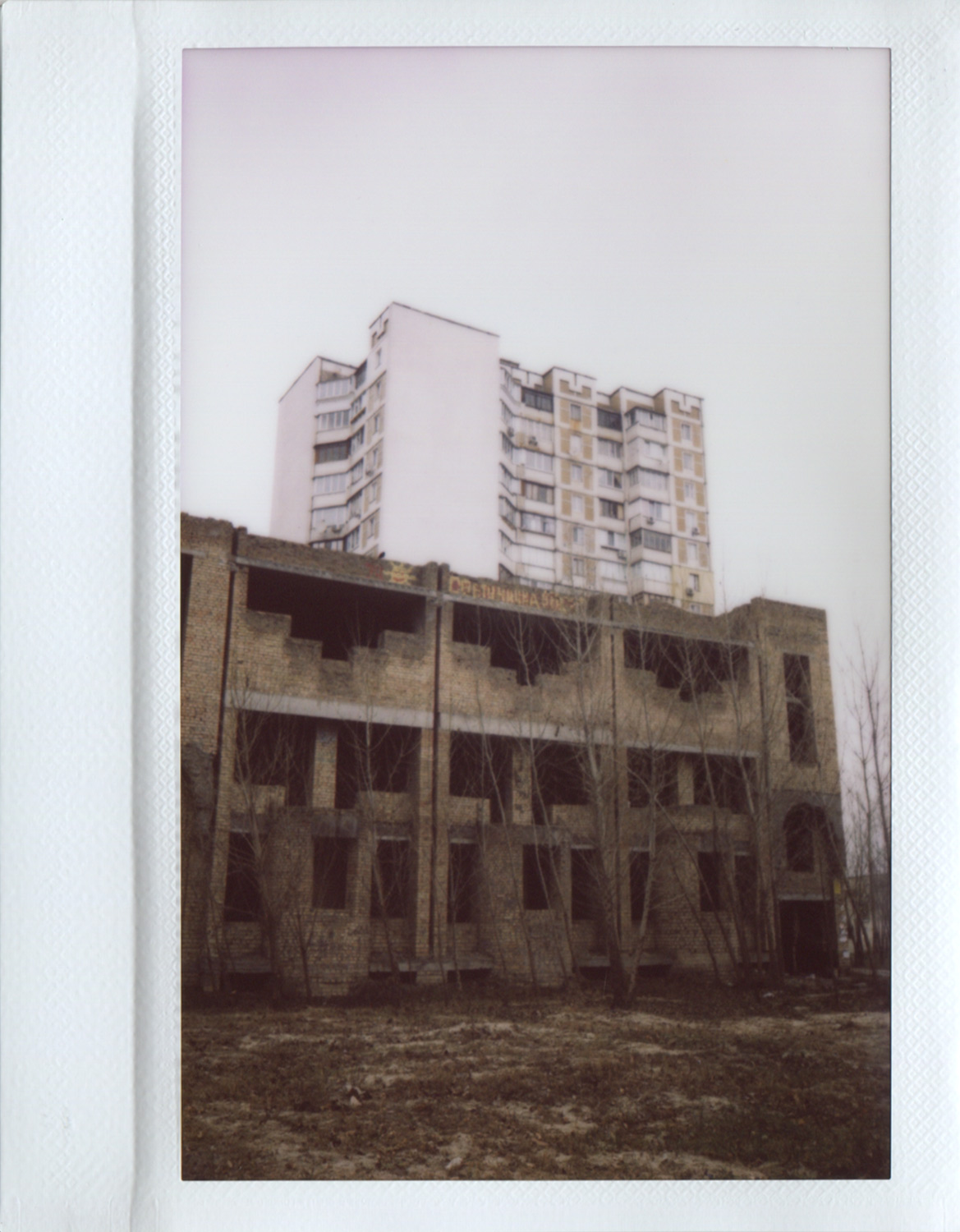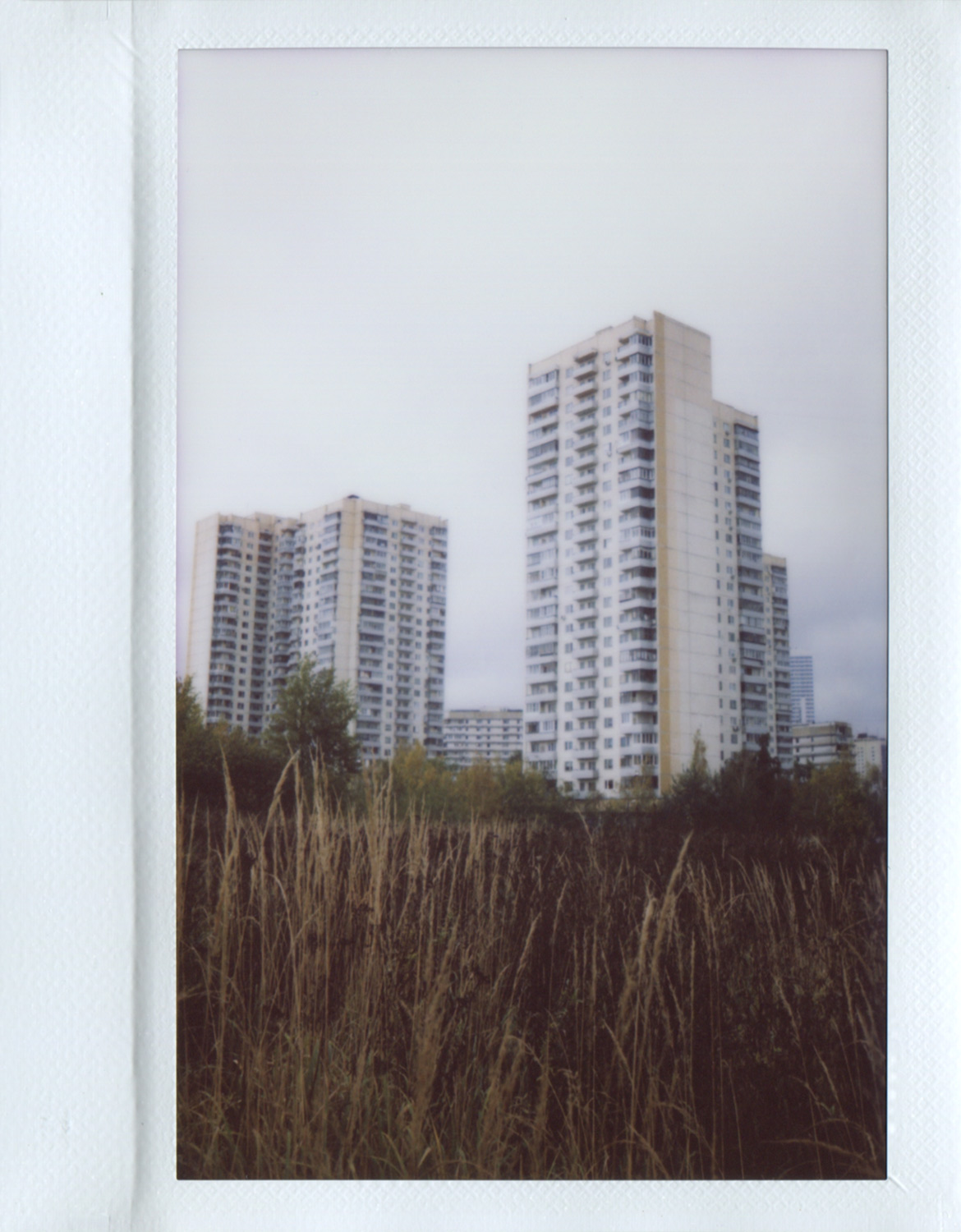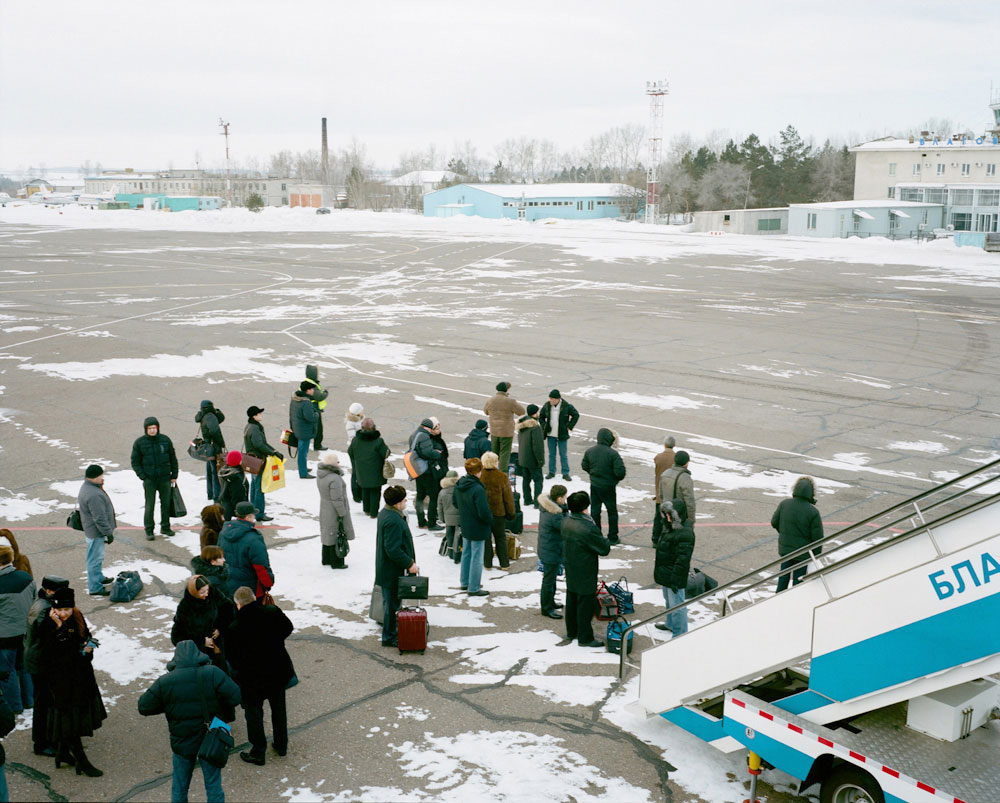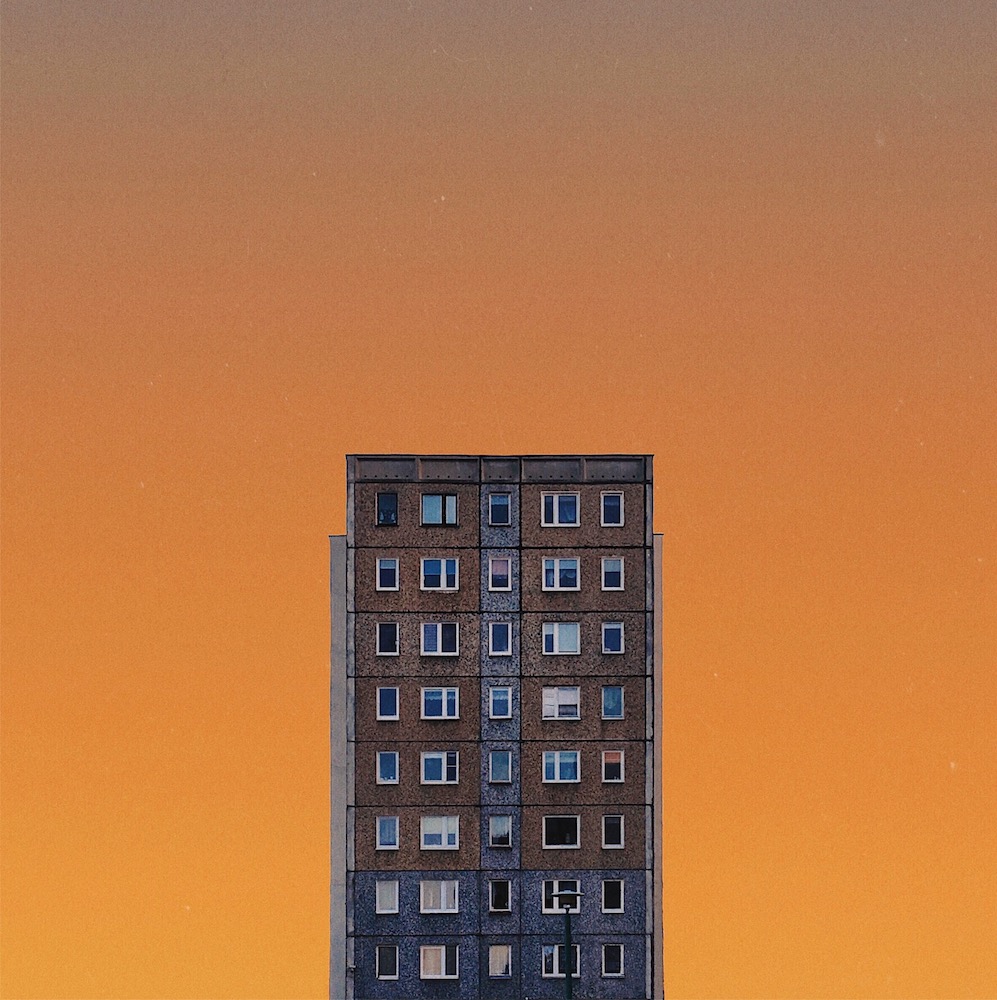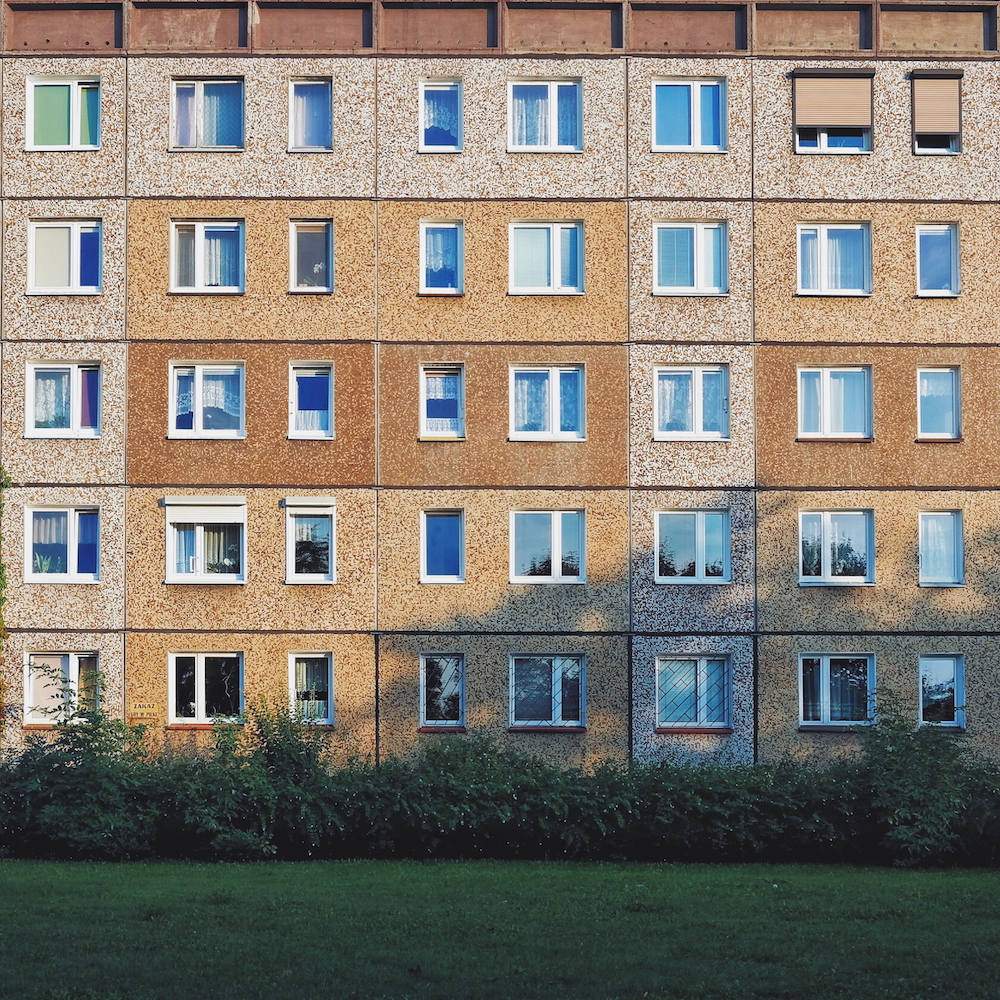High-rise: why does the tower block loom so large in post-Soviet-era photography?
Are they ugly and overbearing, reminiscent of an authoritarian past? Why are mass housing blocks such a recurring presence in the work of contemporary photographers from eastern Europe?
When a devastating fire ripped through the 24-storey Grenfell Tower apartment block in west London last summer, Britain stood aghast. The blaze claimed the lives of 71 of the building’s residents, triggering sorrowed debate in Britain about the direction of the country. Had a nation that pioneered welfare state provision forgotten how to care for its most vulnerable citizens? Had the idea of decent housing become a luxury rather than a basic expectation for the poor? The notion that the condition of public housing could be seen as a marker for wider questions of social progress felt like a return to a previous age.
In the 1960s through to the 80s, the high-rise played a prominent role, for better and worse, as a surrogate for popular anxieties about the state of the country. From Sheffield’s austere Park Hill and the sprawling, slum-like and now-demolished Red Road in Glasgow to Tottenham’s Broadwater Farm, scene of a riot in 1985 in which a policeman was murdered, they frequently served a symbolic function in the public consciousness. Even as they were often reviled, they still played an important symbolic role in keeping prominent the lives and needs of some of society’s least well-off.
Under the neo-liberal privitisation policies of the Thatcher and New Labour governments, they faded from view. Rising inequalities of wealth and the marginalisation of the disadvantaged have left them invisible. When a new leader of the inept and out of touch Chelsea and Kensington Council was appointed to rectify the council’s disastrous response to the Grenfell blaze, she was quickly forced to admit she’d never visited any of the borough’s tower blocks. It was as if it had taken the fire for her to even notice their presence.
In some places, the tower block has never faded from view. The history of mass housing in eastern Europe is complex and uncomfortable. Yet what’s striking is how prominently the tower block features in the work of contemporary photographers from that territory. These artists have every reason to turn their backs on such buildings. They’re ugly and overbearing, not to say reminiscent of an authoritarian past. But the mass housing block is a recurring presence in their work. It’s there in the beautiful and strange landscapes of Estonian-born Alexander Gronsky, the pastel-hued, almost achingly romantic images of Poland’s Jędrzej Franek and in the dreamlike scenes conjured by Russia’s Kirill Savchenkov. To that list can be added many more names, including Lithuania’s Andrej Vasilenko, Russia’s Egor Rogalev and Alexey Bogolepov and Poland’s Lola Paprocka and Rafal Milach. The trope of the tower building is a surprising development given that previous generations of artists and writers from former communist countries have viewed the same buildings with suspicion and dread.
In Yevgeny Zamyatin’s We, the 1924 dystopian novel that inspired Orwell, Huxley and Bradbury, the apartment block is at the centre of societal repression. The citizens of One State, a nation comprised of one sprawling city, have numbers not names. They dress in matching uniforms, eat the same food and follow the same rigidly enforced timetables for work, sleep and sex. Yet in Zamyatin’s telling, the true horror of their existence is communal living.
People are allocated homes in spartan apartments made entirely of glass. They are denied privacy or individuality. There is only constant surveillance under the gaze of neighbours and passersby. A forced life in public.
For Ilya Kabakov the only escape from the constraints of the housing block is through fantasy. The Soviet apartment building, which obliged families to cram together, sleeping behind curtains in the same room and sharing cooking and bathroom facilities, represented a situation of degrading intimacy that was also the catalyst for an environment of ceaseless enmity between neighbours. As he put it, “The perpetual state of war, either concealed or open, which reigns in the communal apartment creates in it an atmosphere of waves and tornadoes that never subside.”
In response, the unseen protagonist of Kabakov’s artwork The Man Who Flew Into Space From His Apartment fashions an improbable escape by building a giant catapult to hurl himself through the ceiling of the apartment and into the stratosphere; summoning, as he does so, the potent Soviet belief in social progress through technological development to conjure himself free of the squalid reality of his surroundings.
One of the ironies in Kabakov’s artwork is that the notion of mass housing itself was initially conceived as a great technological leap forward.
In the early 1950s, the Soviet Union faced a housing crisis. The crisis had been triggered by Stalin’s attempts at rapid industrialisation of the mainly agrarian nation, which sent scores of rural migrants flooding into the cities to seek work, without an adequate supply of housing to meet their needs. It was then exacerbated by the war, which left millions homeless across the country.
In 1954, Khrushchev called for the “industrialisation of architecture” as a means to deliver an urgently needed programme of mass housing. The policy was informed by the ideas of Soviet urban planners such as the authors of The Ideal Communist City, an influential book written that decade by members of the architectural faculty of the University of Moscow.
“Today the city does not fulfill its essential purpose, which is to be an organic community,” the book’s writers declared. “Seeking new approaches, architecture strives to create the city of the future. We must find a structure that responds organically to the social and economic functions of the new urban life.”
What should the city of the future look like? It was to be a place that nurtured communities. Nurseries would be walking distance from residential areas. There’d be theatres and sports halls nearby and ready access to public transport. Housing blocks would be modelled on the clean lines of modernist design. Instead of private homes which, the authors feared, would lead the Soviet citizen to “separate himself from others” and shun the collective responsibility of building socialism, people would live together in high density apartments with shared facilities for cooking and eating. Here, in these new model developments, Homo Sovieticus, the “Soviet Man”, would thrive.
As one historian, cited in Joel Kotkin’s The Human City, wrote, the communist city was to be a place “free of historical burdens, where a new human being was to come into existence, the city and the factory were to be a laboratory of a future society, culture, and way of life.”
The idea was compelling and swiftly adopted. Mass produced buildings of reinforced concrete, made quickly and cheaply to a standardised model, were erected across the Soviet Union. Despite propaganda images of happy families in well-managed housing blocks, the reality was less inviting: shoddily constructed, drably utilitarian “sleeping districts” that dominated the urban landscape. By the end of the regime in 1991, industrialised housing made up 75 per cent of all Soviet housing stock.
Given its problematic history, why has the tower block become such a source of fascination in the post-Soviet period? Perhaps its appropriation is a way to signify both the distance that eastern Europe has come since communism and the proximity of the past to the present.
In Alexander Gronsky’s Pastoral series, for instance, apartment buildings loom over the landscape dwarfing the human figures before them. Gronsky’s images are taken on the outer edges of Moscow, in the edgelands between city and suburb. In his rendering, these are unlovely places where people relax on patches of scrubland, in awkward proximity to cranes and cooling towers and slag heaps.
Gronsky’s photos might theoretically be intended as a critique of a ruined arcadia; the title of the series a sardonic take on a despoiled idyll. But it doesn’t feel that way. Gronsky has based his photos on to 18th- and 19th-century European landscape paintings and the images seem too carefully constructed, too concerned with the unlikely beauty of each scene, to suggest say that his motive might be, say, an allegorical dig at the state of modern Russia under Putin.
Rather, they suggest an attempt to reconcile in one image the urban and the rural, the past and the present, the man-made and the natural, the public and the private - along with a recognition of the inherent contradictions of such an effort. They are beautiful pictures of ugly places and in that respect, they mark both an accommodation with Soviet history and a liberation from the kind of relationship to the built environment that artists like Kabakov could only struggle with. “You look at the pictures and presume they are connected in some way, and that there’s a story behind this connection,” Gronsky has said of his work. “I never give any particular detail of what is going on, so that the viewer can try to interpret it any way. For me it isn’t necessary that the thing in the photography should somehow explain reality, it should be misleading as well.”
A similar act of reconciliation is on display in Lola Paprocka’s photographs of the town of New Belgrade in Serbia. The district was originally built to be a new capital for socialist Yugoslavia after the Second World War. The plan was never realised however and the town’s function became unclear. Today its sprawling apartment blocks stand graffitied and untended. But by focusing on the ordinary people going about their lives in the shadow of those buildings, Paprocka manages another reckoning with history; she rescues New Belgrade from its past and renders it vividly alive.
A reappraisal of the image of the tower block is also a theme explored in the work of Kirill Savchenkov. In his series Atlas, Savchenkov goes in search of the original utopian impulse behind the Soviet mass housing project. Atlas assembles Polaroid snapshots taken in cities of the former USSR, including Kiev, Yalta, Moscow and St Petersburg. Savchenkov merges the images together to create an idealised portrait of the Soviet sleeping district of the 1980s. The series conjures scenes from a place that never existed, but which is nevertheless inspired by the Moscow-based artist’s own memories of growing up among such buildings as a child. As he puts it, “I tried to gather together what could be that ideal district as I saw it in my memories and dreams from when I was young.”
Savchenkov creates an even more dreamlike environment in other works, where he places high-rises in digitally imagined landscapes, the tower blocks standing sentinel over rivers, valleys and enormous mountains.
In their focus on the tower block as both social site and a point of artistic inspiration, artists like Savchenkov, Gronsky and their peers stand in contrast to two other notable tendencies in the photography of the post-Soviet landscape.
The first of these is the valourisation of Brutalist buildings and monuments. This approach can be seen in photo books such as Frederic Chaubin’s Cosmic Communist Constructions Photographed, Roman Bejak’s Socialist Modernism and Christopher Herwig’s Soviet Bus Stops. Here, bold concrete constructions, many previously unknown to a Western audience, are reclaimed as lost architectural marvels. Rescued from the past, they now stand, fabulous and strange, under the glare of a new spotlight; wildly adventurous and idiosyncratic buildings such as the Georgian Ministry of Highways, with its Jenga-like structure of interlocking tiers, and the flying saucer style Druzhba sanitorium in Yalta, Ukraine, revealed as a heightened mix of science fiction and scientific rationalism.
The latter tendency is the photographic style that focuses on ruined and abandoned buildings of the communist era. Books and projects such as Rebecca Litchfield’s Soviet Ghosts and Eric Lusito’s Traces of the Soviet Empire typically feature shots of abandoned school rooms and hospitals, chipped Socialist Realist murals and collapsing statues of Lenin. They sit within a larger body of ruin porn photography that also includes photo books with titles like Beauty in Decay, Abandoned Futures and Abandoned Places: 60 stories of places where time has stopped. In such works, derelict buildings and crumbling monuments are presented stripped of context or historical reference. That’s particularly problematic in the context of the legacy of the Soviet Union and its satellite states, in that all sites are presented on the basis of aesthetic alone, as if the long, painful past of the communist period has no relationship to the scene captured on camera.
If there’s a body of work that the tower block artists hew closer to it’s probably the new topographics school associated with US photographers such as Robert Adams, Stephen Shore, Lewis Baltz and Nicholas Nixon. These artists were inspired by the ordinary urban landscapes of 1970s America. They depicted skyscrapers, freeways, parking lots, suburban housing estates and warehouses on light industrial sites with a stark, deadpan beauty. Their images were criticised at the time as boring and banal. Today, the work is celebrated for just those same qualities; as images that gaze, without distraction, at the man-made environment with the same acuity and precision with which early masters such as Ansel Adams rendered nature.
The photographers of the post-Soviet landscape manage the same feat. They return to the drab, mundane public housing block with a care and curiosity that probably exceeds that of the buildings’ original architects. For example, in his ongoing project Russian Palimpset, Russian photographer Max Sher seeks to go from city to city, in order create “a new visual map” of his country. Sher’s aim is to “aestheticise that which is considered ‘ugly’... by photographing the everyday”. The point he argues “is that this is what Russia looks like so we should… accept it and reclaim these images as our own.”
Sher cites the blank, dispassionate style of the Dusseldorf school as an inspiration.
The comparison has its limits.
Instead of the cerebral remove of say, Bernd and Hiller Becher, much of this work is warmer in tone and more emotionally engaged with its subject.
For example, Jędrzej Franek’s photos of his hometown of Poznan, Poland feature the city’s apartment blocks wreathed in smog or surrounded by ominous clouds. But the result is thrilling, with buildings set against pastel skies and shafts of celestial sunlight piercing the gloaming like a Renaissance painting. Franek makes no apology for his attachment to his city. As he worked on the project, “wandering and looking through the lens,” he says, “I fell in love with Poznan.”
Not all the tower block photographers share Franek’s romantic ardour. But what perhaps they do have in common is a similar sense of empathy for their subject. Ultimately, they are involved in a humanising project. Rather than lauding the tower block and the sleeping district as illustration of a grand utopian plan or as metaphor for a failed ideology, they seem to be insisting that it be seen as a site of lived experience.
However ugly and monolithic such buildings were after all, they provided homes for people and are worth time and scrutiny as sites of possibility and connection.
They were places where people gathered to sleep and eat, to argue and to raise families. And they continue to be so. Perhaps this is a modest artistic aim. But it’s also a worthwhile one.
All the more so in comparison to the lack of visibility of high-rise housing somewhere like Britain, where it took a lethal fire to return a building such as Grenfell Tower to public sight.
Text: Ekow Eshun
Top image: Jędrzej Franek

